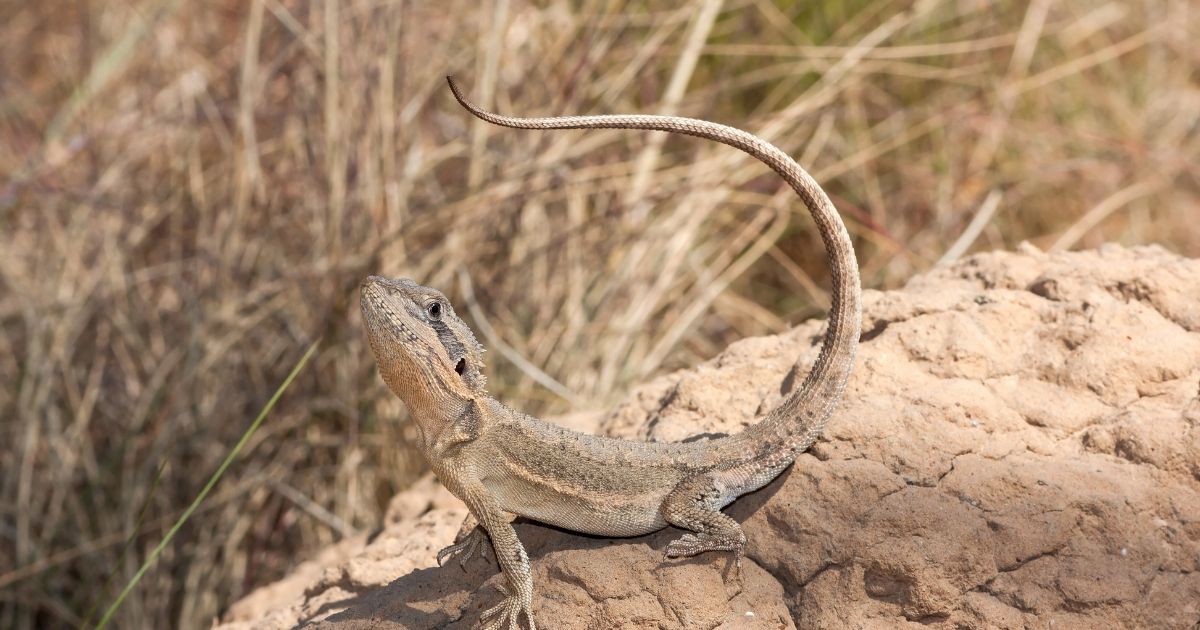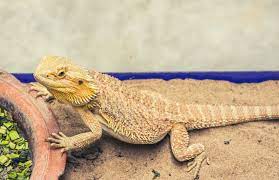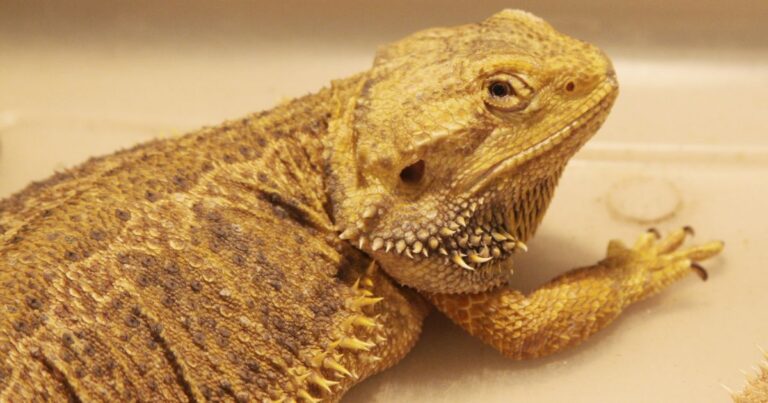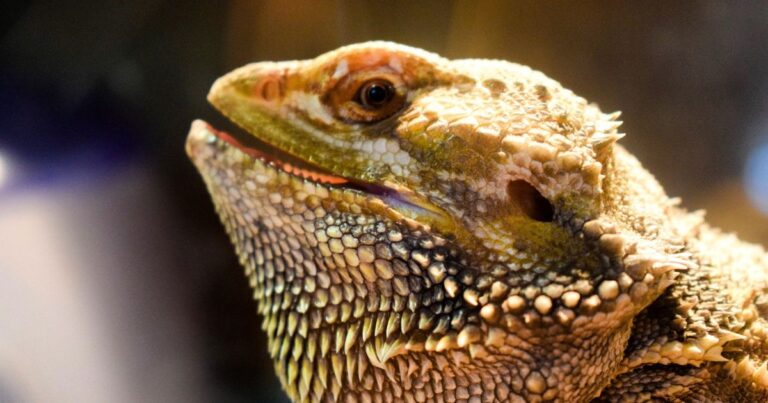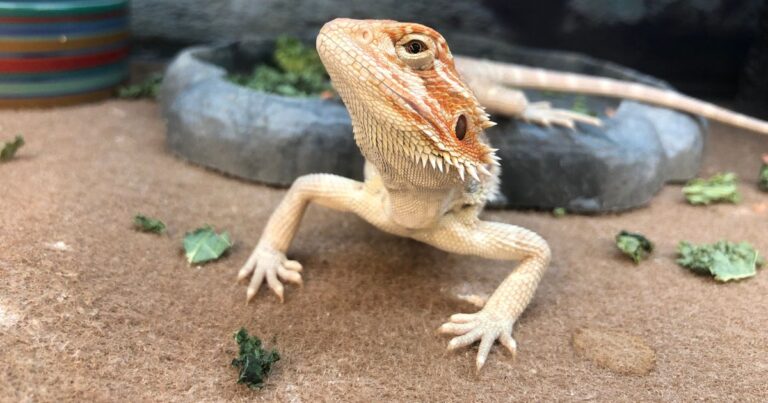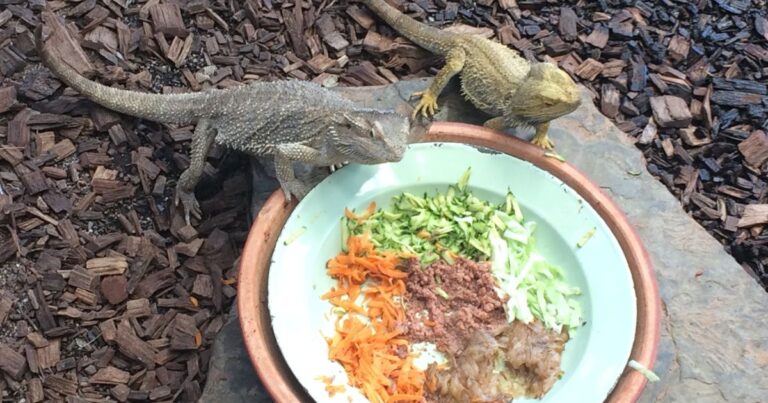Bearded Dragon Tail Rot and Tail Injuries
Table of Contents
Bearded Dragon Tail Rot
| Symptoms | Causes | Prevention |
|---|---|---|
| Change in tail color | Injury | Regular habitat cleaning |
| Tail tip appears dry or shriveled | Poor hygiene | Careful handling |
| Loss of tail tip | Incorrect temperatures | Regular health checks |
| Lack of appetite | Inadequate diet | Proper diet and temperature |
Bearded dragon tail rot is no laughing matter, but don’t worry, we’ve got your back! This article will guide you through the ins and outs of this condition, from causes to treatments. Stick around to learn how to keep your scaly friend’s tail in tip-top shape!

Introduction
Hey there, dragon buddies! Let’s chat about something that’s as tricky as a maze and as mysterious as a dragon’s hoard. Yep, you guessed it, we’re talking about bearded dragon tail rot. Now, before you start picturing Gilbert with a rotting tail, let me assure you, he’s as fit as a fiddle and his tail is in tip-top shape. But it’s important for us dragon parents to know about this condition, just like we need to know about the fire-breathing capabilities of dragons (spoiler alert: they can’t actually breathe fire!).
The health of a bearded dragon can often be determined by the state of its tail. A healthy tail is a sign of a happy dragon.
Tail rot, as ominous as it sounds, is a condition that can affect our scaly friends. Imagine you’re a knight in shining armor, and tail rot is the dragon you have to defeat. It’s a bit like that, except in this case, we’re fighting to protect the dragons, not from them. Tail rot is essentially a type of infection that can cause a bearded dragon’s tail to, well, rot. It’s as unpleasant as stepping on a Lego piece, but fear not, it’s treatable.
You might be wondering, “Why is my bearded dragon’s tail rotting?” Well, let’s embark on this quest together, shall we? We’ll explore the shadowy caves of tail rot, learn how to slay this beast, and discover how to keep our dragons safe. And who knows, there might be a few laughs along the way!
Understanding Tail Rot
| Key Takeaway | Description |
|---|---|
| Understanding | Know what tail rot is and what causes it |
| Treatment | Learn how to treat tail rot at home and when to consult a vet |
| Prevention | Understand how to prevent tail rot |
| Care | Always provide the best care for your bearded dragon |
Picture this: you’re a detective, and you’re trying to solve the mystery of the rotting tail. The first thing you need to do is understand your adversary. Tail rot is a bit like a sneaky thief in the night, causing damage without being noticed. It’s an infection that starts at the tip of the tail and, if left untreated, can spread upwards.
So, what causes tail rot? It’s usually the result of an injury. Think of it like this: if a dragon’s tail is a castle, then an injury is like a breach in the castle walls, allowing the enemy (in this case, bacteria) to invade. It’s not the most pleasant image, I know, but it’s important to understand how this foe operates.
Now, you might be looking at your bearded dragon’s tail and thinking, “Is it normal for a bearded dragon to have a black tail?” Well, a change in tail color can be a sign of tail rot, but it can also be a sign of shedding. It’s a bit like trying to tell the difference between a dragon and a lizard from a distance – they might look similar, but they’re very different!
Signs of a Healthy Bearded Dragon Tail
- Bright and vibrant color
- Smooth texture
- Active movement
- Regular shedding
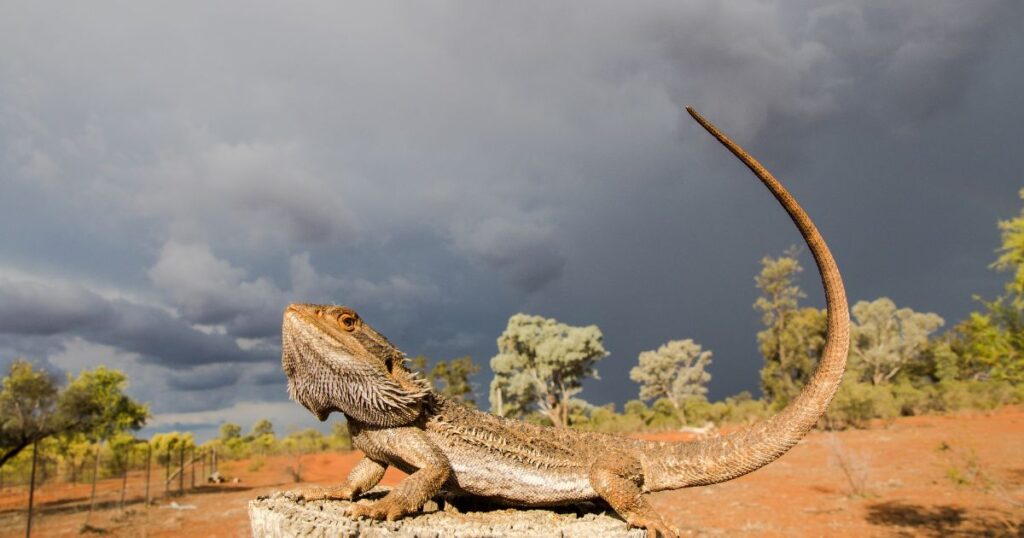
Treating Tail Rot
| Step | Description |
|---|---|
| 1 | Identify the symptoms |
| 2 | Clean the affected area |
| 3 | Apply a mild antiseptic |
| 4 | Monitor the tail |
| 5 | Consult a vet if no improvement |
Alright, now that we’ve got a handle on what tail rot is and what causes it, let’s talk about how to fix it. Imagine you’re a dragon healer, armed with knowledge and ready to help your scaly friend. The first step in treating tail rot is to clean the affected area. It’s a bit like cleaning a wound after a dragon battle – it might not be fun, but it’s necessary.
So, how do you fix tail rot in bearded dragons? Well, a warm bath and a gentle cleaning with a mild antiseptic can work wonders. It’s kind of like giving your dragon a spa day, but with a medical twist. And remember, it’s important to be gentle – we don’t want to cause any more damage.
But when should you take your bearded dragon to the vet? If the tail rot doesn’t improve with home treatment, or if it seems to be getting worse, it’s time to call in the professionals. It’s like calling for backup when a dragon is too big to handle alone – sometimes, we need a little help from our friends.
Essential Items for Treating Tail Rot
- Mild antiseptic
- Warm water
- Soft cloth
- Bearded dragon-safe disinfectant for habitat cleaning

Preventing Tail Rot
| Prevention Measure | Description |
|---|---|
| Regular Cleaning | Keep the habitat clean to prevent bacterial growth |
| Gentle Handling | Handle your dragon carefully to avoid injuries |
| Regular Health Checks | Regularly check your dragon’s tail for any signs of discoloration or injury |
| Proper Diet | Ensure your dragon is getting a balanced diet to keep its immune system strong |
Now, let’s talk about prevention. Because let’s face it, preventing tail rot is a lot easier than treating it. It’s like building a strong castle to keep the dragons safe, rather than trying to repair it after an attack. So, how can you prevent tail rot in your bearded dragon?
Firstly, keep your dragon’s habitat clean and safe. It’s a bit like keeping a dragon’s lair free from knights – it reduces the risk of injury and infection. Secondly, handle your dragon carefully to avoid causing any injuries. Think of your dragon as a delicate work of art – beautiful to behold, but requiring gentle care.
But what if you notice your bearded dragon’s tail changing color? Well, don’t panic. Remember, it could just be shedding. But if you’re worried, it’s always a good idea to check with a vet. It’s better to be safe than sorry, especially when it comes to our scaly friends.
Daily Habits for a Healthy Bearded Dragon
- Regular habitat cleaning
- Daily health checks
- Balanced diet
- Safe handling
Prevention is better than cure, especially when it comes to our bearded dragons. A little care goes a long way in keeping them healthy and happy.

Conclusion
So, there you have it, folks. We’ve journeyed through the land of tail rot, learned how to treat it, and discovered how to prevent it. It’s been a wild ride, but remember, every dragon keeper needs to know about these things. Because our dragons depend on us, and we wouldn’t have it any other way.
Remember, taking care of a bearded dragon is a big responsibility, but it’s also a lot of fun. It’s like being a dragon rider – it’s a thrilling adventure, but it also requires dedication and care. So, keep learning, keep caring, and keep being the amazing dragon parents that you are.
If you want to learn more about bearded dragon care, check out the Bearded Dragon Care category. And don’t forget to check out my index page on Bearded Dragon Health Issues.
Other pages of interest: Bearded dragon stress marks and Bearded dragon thermal burns and heat-related injuries
And with that, it’s time to sign off. But don’t worry, we’ll be back with more dragon tales and tips. Until then, keep your swords sharp and your dragons happy!
Disclaimer: This article is intended for informational purposes only. It’s not a substitute for professional veterinary advice. Always consult with a qualified veterinarian if your bearded dragon shows signs of illness or injury.
Frequently Asked Questions
What causes tail rot in bearded dragons?
Well, tail rot can be a real party pooper, right? It’s usually caused by an injury that hasn’t healed properly, leading to an infection. It’s like when you get a scrape and don’t clean it properly, except it’s a lot more serious for our scaly pals.
How do you fix tail rot in bearded dragons?
Fixing tail rot isn’t as simple as slapping a band-aid on it, unfortunately. It usually involves a trip to the vet, who may prescribe antibiotics or even perform surgery in severe cases. It’s like going to the dentist for a toothache, but for your dragon’s tail!
Can bearded dragons recover from tail rot?
Absolutely! With the right treatment and a lot of TLC, bearded dragons can bounce back from tail rot. It’s like when you’re sick and you get better after taking medicine and resting a lot. The same goes for our scaly friends.
Is it normal for a bearded dragon to have a black tail?
A black tail can be a sign of tail rot, but it can also be a normal color change. It’s like when leaves change color in the fall. However, if your dragon’s tail is black and they’re showing other signs of illness, it’s best to consult a vet.
When should I take my bearded dragon to the vet?
If you suspect tail rot, it’s best to take your bearded dragon to the vet ASAP. It’s like when you have a toothache that won’t go away – you don’t want to wait around and hope it gets better on its own!
Can you use Betadine on reptiles?
Yes, you can! Betadine is often used to clean wounds on reptiles, including bearded dragons. It’s like the dragon version of antiseptic cream. But remember, it’s always best to consult a vet before starting any treatment.
Why is my bearded dragon’s tail changing color?
Color changes can be a normal part of a bearded dragon’s life, but they can also signal health problems like tail rot. It’s like when your skin gets red and itchy when you have an allergic reaction. If your dragon’s tail is changing color and they’re acting differently, it’s time to call the vet.
